Types of Room Build in a Residential Building
Important Point
Here, the very types of room sizes are as follows.
- Foyer
- Living Room
- Dining Room
- Kitchen
- Store Room
- Pantry
- Bath Room
- Master Bedroom
- Master Bathroom
- Guest Bed Room
- Guest Bathroom
1. Foyer
In an apartment or residential structure, a foyer is a lobby or corridor that separates the entry from the living room. However, some people opt to skip it and utilize the living room as the apartment’s entryway, especially if money is tight.
The following are the suggested standard measurements for foyers of various sizes
- Large Size of Foyer: 2.44 m x 4.57 m
- Medium Size of Foyer: 2.44 m x 3.05 m
- Small Size of Foyer: 1.83 m × 1.83 m
Also, read: Type of Brick in Brick Masonry English Bond & Flemish Bond |Difference Between English Bond and Flemish Bond
2. Living Room
The living room is a comfortable and central location for family members to sit. It also serves as a reception area for important occasions. The location should be in the center of the building, close to the entry foyer and eating area. It must be well-lit and well-ventilated.
The following are the recommended standard measurements for living rooms of various sizes
- Large: 6.71 m × 8.53 m
- Medium: 4.88 m × 6.01 m
- Small: 3.66 m × 5.49 m
- Very Small: 3.05 m × 3.66 m
3. Dining Room
The following are the suggested standard dimensions for dining rooms of various sizes
- Large: 4.26 m x 5.48 m
- Medium: 3.65 m x 4.87 m
- Small: 3.05 m x 3.66 m
- Very Small: 3.05 m x 2.44 m
4. Kitchen
It should be supplied at the building’s back corner, but the NE corner is preferable. It should be connected to the dining room and positioned such that maximum solar light comes in during the early hours, when it is most utilised, if feasible. It should feature windows for appropriate air circulation and a chimney for smoke disposal. The percentage of window space should be at least 15% of the total floor area. In the kitchen, a sink made of sturdy materials should be supplied, as should adequate storage space.
The following are the suggested standard kitchen dimensions for various sizes:
- Large: 3.65 m x 6.09 m
- Medium: 3.05 m x 4.87 m
- Small: 3.05 m X 2.44 m
- Very Small: 2.13 m X 2.75 m
Also, read: What Is Classification of Bricks | Classification of Bricks Different Base
5. Store Room
It should be close to the kitchen and have enough room to store cooking accessories and necessities. A sufficient quantity of shelves was also required. When there is a lack of space, the storage and kitchen are frequently merged.
The following are the suggested standard dimensions of various types of storage rooms:
- Large: 3.65 m x 4.26 m
- Medium: 2.44 m x 3.05 m
- Small: 1.52 m X 1.83 m
6. Pantry
It is a tiny area adjacent the dining room where cooked food is stored. It should have a suitable quantity of cupboards and storage racks. In general, a kitchen functions as a pantry in a standard structure.
The following are the suggested standard dimensions for pantries of various sizes:
- Large: 1.22 m x 1.83 m
- Medium: 0.91 m x 1.22 m
- Small: 0.61 m x 0.61 m
7. Bath Room
When visitors or outsiders visit a house member, bath and WC facilities should be supplied separately so that the two can be utilised concurrently by two distinct users. This will come in handy if you have a large number of attendees during a special event or festival. Bath and WC require enough ventilation and natural light. In a bathroom, two windows should be provided. One for ventilation at sill level at a height of 2000mm, and another for light and privacy at a low level with frosted glass.
The following are the suggested standard measurements for a typical bathroom of various sizes:
- Large: 2.13 m × 3.66 m
- Medium: 1.83 m × 3.05 m
- Small: 1.52 m × 2.75 m
- Very Small: 1.06 m × 1.98 m
8. Master Bedroom
It should be situated in such a manner that it is properly ventilated while also providing seclusion. Preferably on the building’s sides, with at least one wall exposed for optimum ventilation and illumination. It should also be placed on the prevailing wind’s side and get enough natural light. The minimum window area to floor area ratio should be 1:10.
The following are the suggested standard measurements for master bedrooms of various sizes:
- Large: 4.87 m x 7.31 m
- Medium: 4.26 m x 6.10 m
- Small: 3.65 m x 4.26 m
- Very Small: 3.35 m x3.65 m
9. Master Bathroom
It is now standard practice to have an adjoining bathroom and toilet. To avoid unpleasant odors, adequate and sufficient lighting and ventilation should be given.
The following are the suggested standard measurements for master bathrooms of various sizes:
- Large: 3.05 m x 4.87 m
- Medium: 2.44 m x 3.65 m
- Small: 1.83 m x 2.74 m
- Very Small: 1.98 m x 2.43 m
10. Guest Bedroom
A well-lit and ventilated guest room are ideal. It should be on one side of the structure, typically next to the drawing room. It should have its own bathroom and toilet.
The following are the suggested standard measurements for guest bedrooms of various sizes:
- Large: 4.27 m x 5.49 m
- Medium: 3.65 m x 4.27 m
- Small: 3.05 m x 4.27 m
- Very Small: 2.9 m x 3.65 m
11. Guest Bathroom
The following are the suggested standard measurements for a guest bathroom of various sizes are:
- Large: 2.14 m x 3.65 m
- Medium: 1.83 m x 3.04 m
- Small: 1.52 m x 2.74 m
- Very Small: 1.2 m x 2.44 m
Area Limitation
1. Habitable Room
The minimum requirement for plots is up to 50 square meters.
- Area 7.50 sq m.
- Width 2.10 m.
- Height 2.75 m.
Requirement for plots above 50 sq m.
- Area 9.50 sq m.
- Width 2.40 m
- Height 2.75 m
2. Kitchen
The minimum requirement for plots up to 50 square meters
- Area 3.30 sq m.
- Width 1.50 m.
- Height 2.75 m
The minimum requirement for plots larger than 50 square meters.
- Area 4.50 sq m.
- Width 1.50 m.
- Height 2.75 m.
3. Pantry
The minimum requirement for plots larger than 50 square meters.
- Area 3.00 sq m.
- Width 1.40 m.
- Height 2.75 m
4. Bathroom
The minimum requirement for plots up to 50 square meters.
- Area 1.20 sq m.
- Width 1.00 m.
- Height 2.20 m.
The minimum requirement for plots larger than 50 square meters.
- Area 1.80 sq m.
- Width 1.20 m
- Height 2.20 m
5. W.C.
The minimum requirement for plots up to 50 square meters
- Area 1.00 sq m.
- Width 0.90 m.
- Height 2.20 m.
The minimum requirement for plots larger than 50 square meters.
- Area 1.10 sq m.
- Width 0.90 m.
- Height 2.20 m.
6. Combined Bath & W.C
The minimum requirement for plots is up to 50 square meters.
- Area 1.80 sq m.
- Width 1.00 m.
- Height 2.20 m.
The minimum requirement for plots larger than 50 square meters.
- Area 2.80 sq m.
- Width 1.20 m.
- Height 2.20 m.
Rooms Sizes
Here, the difference types room size are as follows.
| Sr.No. | Room | Size | Sq. Meter |
| 1 | Normal Bed Room Size | 4.88 m x 6.01 m | 29.33 Sq.m. |
| 2 | Normal Kitchen Room Size | 3.65 m X 6.09 m | 22.23 Sq.m. |
| 3 | Normal Bath Room Size & Water Closet | 2.13 m x 3.66 m | 7.80 Sq.m. |
| 4 | Normal Store Room Size | 2.44 m x 3.05 m | 7.42 Sq.m. |
| 5 | Normal Garage Room Size | 5.0 m x 2.4 m | 12.5 Sq.m. |
Typical Room Sizes
| Sr.No. | Typical Room | Sizes |
| 1 | Living Room Size | 6.71 m x 8.35 m |
| 2 | Dining Room Size | 4.26 m x 5.48 m |
| 3 | Kitchen Room Size | 3.05 m x 4.87 m |
| 4 | Store Room Size | 2.44 m x 3.05 m |
| 5 | Pantry Roon Size | 1.22 m x 1.83 m |
| 6 | Bath Room Size | 1.83 m x 3.05 m |
| 7 | Master Bedroom Size | 4.26 m x 6.10 m |
| 8 | Master Bathroom size | 3.05 m x 4.87 m |
| 9 | Guest Bedroom | 3.65 m x 4.27 m |
| 10 | Guest Bathroom | 2.14 m x 3.65 m |
How Big Is a Room
The following how big is a standard room as below.
| Sr.No. | Name of Big Room | Big Room Size | Small Room Size |
| 1 | Living Room Size | 6.71 m x 8.35 m | 3.05 m x 3.66 m |
| 2 | Dining Room Size | 4.26 m x 5.48 m | 3.05 m x 2.44 m |
| 3 | Kitchen Room Size | 3.05 m x 4.87 m | 2.13 m x 2.75 m |
| 4 | Store Room Size | 2.44 m x 3.05 m | 1.52 m x 1.83 m |
| 5 | Pantry Roon Size | 1.22 m x 1.83 m | 0.61 m x 0.61 m |
| 6 | Bath Room Size | 1.83 m x 3.05 m | 1.06 m x 1.98 m |
| 7 | Master Bedroom Size | 4.26 m x 6.10 m | 3.35 m x 3.65 m |
| 8 | Master Bathroom size | 3.05 m x 4.87 m | 1.98 m x 2.43 m |
| 9 | Guest Bedroom | 3.65 m x 4.27 m | 2.9 m X 3.65 m |
| 10 | Guest Bathroom | 2.14 m x 3.65 m | 1.2 m x 2.44 m |
Ideal Bedroom Size
The ideal owner’s bedroom is big enough to fit an adjoining bathroom and a walk-in closet. The average size of an owner’s bedroom in U.S. homes is 14 feet by 16 feet (224 square feet). Other common owner’s bedroom dimensions are 12 feet by 14 feet (168 square feet) and 12 feet by 16 feet (192 square feet).
Average Room Size
The average size of an owner’s bedroom in U.S. homes is 4.3 m by 4.9 m (21.07 square m). Other common owner’s bedroom dimensions are 3.65 m by 4.27 m (15.59 square m) and 3.65 m by 4.9 m (17.90 square m).
Guest Bedroom Size
A guest room typically has either a full-size bed or a queen-size bed in it. The room itself is between 100 and 200 square feet.
Standard Room Sizes
| Sr.No. | Standard Room | Room Sizes |
| 1 | Living Room Size | 4.88 m x 6.01 m |
| 2 | Dining Room Size | 3.65 m x 4.87 m |
| 3 | Kitchen Room Size | 3.05 m x 4.81 m |
| 4 | Store Room Size | 2.44 m x 3.05 m |
| 5 | Pantry Roon Size | 0.91 m x 1.22 m |
| 6 | Bath Room Size | 1.83 m x 3.05 m |
| 7 | Master Bedroom Size | 4.26 m x 6.10 m |
| 8 | Master Bathroom size | 2.44 m x 3.65 m |
| 9 | Guest Bedroom | 3.65 m x 4.27 m |
| 10 | Guest Bathroom | 1.83 m x 3.04 m |
Room Length and Width
Room dimensions are presented in width by length. For example, a room that has a dimension of 12′ x 16′ means it’s 12 feet wide (from side to side) by 16 feet long (from top to bottom). Rooms aren’t always square, so make sure you understand fully how the room feels.
Normal Room Size in Feet
The average size of an owner’s bedroom in U.S. homes is 14 feet by 16 feet (224 square feet). Other common owner’s bedroom dimensions are 12 feet by 14 feet (168 square feet) and 12 feet by 16 feet (192 square feet).
Living Room Minimum Size
The living room dimensions for a medium-size living room typically meet a minimum size of 12 by 18 square feet, and living room dimensions for large living rooms are usually 15 by 20 square feet or larger.
| Sr.No. | Living Room | Minimum Size |
| 1 | Large | 6.71 m x 8.53 m |
| 2 | Medium | 4.88 m x 6.01 m |
| 3 | Small | 3.66 m x 5.49 m |
| 4 | Very Small | 3.05 m x 3.66 m |
Average Length of a House
Queensland follows at 227m2, and New South Wales at 230m2. Tasmania and ACT have the smallest houses at 195m2 and 197m2, respectively.
Standard Room Dimensions
| Sr.No. | Average Room | Average Dimensions | Area of Room Size | |
| Length | Width | |||
| 1 | Living Room Size | 6.71 m | 8.35 m | 56.03 m |
| 2 | Dining Room Size | 4.26 m | 5.48 m | 23.34 m |
| 3 | Kitchen Room Size | 3.05 m | 4.87 m | 14.85 m |
| 4 | Store Room Size | 2.44 m | 3.05 m | 7.44 m |
| 5 | Pantry Roon Size | 1.22 m | 1.83 m | 2.23 m |
| 6 | Bath Room Size | 1.83 m | 3.05 m | 5.58 m |
| 7 | Master Bedroom Size | 4.26 m | 6.1 m | 25.99 m |
| 8 | Master Bathroom size | 3.05 m | 4.87 m | 14.85 m |
| 9 | Guest Bedroom | 3.65 m | 4.27 m | 15.59 m |
| 10 | Guest Bathroom | 2.14 m | 3.65 m | 7.81 m |
Average Room Dimensions
| Sr.No. | Standard Room | Dimensions | Area of Room Size | |
| Length | Width | |||
| 1 | Living Room Size | 4.88 m | 6.01 m | 29.33 m |
| 2 | Dining Room Size | 3.65 m | 4.87 m | 17.78 m |
| 3 | Kitchen Room Size | 3.05 m | 4.81 m | 14.67 m |
| 4 | Store Room Size | 2.44 m | 3.05 m | 7.44 m |
| 5 | Pantry Roon Size | 0.91 m | 1.22 m | 1.11 m |
| 6 | Bath Room Size | 1.83 m | 3.05 m | 5.58 m |
| 7 | Master Bedroom Size | 4.26 m | 6.1 m | 25.99 m |
| 8 | Master Bathroom size | 2.44 m | 3.65 m | 8.91 m |
| 9 | Guest Bedroom | 3.65 m | 4.27 m | 15.59 m |
| 10 | Guest Bathroom | 1.83 m | 3.04 m | 5.56 m |
Room Dimension Examples
Room dimensions are presented in width by the length. For example, a room that has a dimension of 12′ x 16′ means it’s 12 feet wide (from side to side) by 16 feet long (from top to bottom).
House Standard Dimensions
| Sr.No. | Room in House | Standard Dimensions |
| 1 | Drawing Room or Living Room | 4200 mm x 4800 mm |
| 2 | Bed Room or Master Bed Room | 3000 mm x 3600 mm |
| 3 | Dining Room | 3600 mm x 4200 mm |
| 4 | Kitchen | 2500 mm x 3900 mm |
| 5 | Bath / WC Combined | 1800 mm x 1800 mm |
| 6 | Bath (Separated) | 1200 mm x 1800 mm |
| 7 | W. C. (Separated) | 1200 mm x 1200 mm |
| 8 | Guest Room | 3000 mm x 3600 mm |
Standard Room Size in Feet
| Sr. | Name of Room | Room Size in Feet |
| 1 | Drawing Room or Living Room | 13.78 ft x 15.75 ft |
| 2 | Bed Room or Master Bed Room | 9.84 ft x 11.81 ft |
| 3 | Dining Room | 11.81 ft x 13.78 ft |
| 4 | Kitchen | 8.2 ft x 12.8 ft |
| 5 | Bath / WC Combined | 5.91 ft x 5.91 ft |
| 6 | Bath (Separated) | 3.94 ft x 5.91 ft |
| 7 | W. C. (Separated) | 3.94 ft x 3.94 ft |
| 8 | Guest Room | 9.84 ft x 11.81 ft |
Length and Width of a Room
Room dimensions are presented in width by the length. For example, a room that has a dimension of 12′ x 16′ means it’s 12 feet wide (from side to side) by 16 feet long (from top to bottom). Rooms aren’t always square, so make sure you understand fully how the room feels.
How Big Is a Normal Bedroom?
The average bedroom size is about 132 square feet while there are bedrooms much larger than even 144 square feet. The basic guideline to bear in mind while allocating space for a standard bedroom is that it should measure at least 120 square feet to comfortably accommodate a full-size bed.
What Is a Good Size Bedroom?
10′ x 10′ would be a small children’s bedroom while 15′ x 15′ would be a good sized adult bedroom – sufficient for furniture and room to move. Most places 10×10 or 10×12 feet is standard. Perfect is a matter of preference.
How Small Can a Bedroom Be
A small bedroom can also be considered the “minimum size bedroom.” Legally, in order to be called a bedroom, a room must measure 7′ x 10′. Anything smaller and sellers cannot call it a bedroom.
Standard Bedroom Size in Feet
| Sr.No. | Bedr Room | Size in ft |
| 1 | Small Size Bedroom | 9 ft x 9 ft |
| 2 | Medium Size Bedroom | 12 ft x 12 ft |
| 3 | Large Size Bedroom | 16 ft x 18 ft |
What Is the Standard Room Size?
Here, the different types of standard room sizes are as follows.
| Sr.No. | Room | Size |
| 1 | Medium Room Size | 16 ft x 20 ft |
| 2 | Small Room Size | 12 ft x 18 ft |
| 3 | Very Small Room Size | 10 ft x 12 ft |
| 4 | Large Size | 22 ft x 28 ft |
Average Bedroom Window Size
The most common window size or average bedroom window size is 24×36. All common window sizes & dimensions for fixed, standard & double-hung windows can differ on manufacture.
Average Size of Master Bedroom
The average size of a master bedroom is 14 x 16 feet. It may be bigger than that but 224 square footage is a minimum. This ensures that you can easily accommodate a king or queen-size bed in the master bedroom while still leaving enough closet space.
Standard Garage Size in Meters
Here, the standard garage size in meters are as follows.
- Width: 5 to 6 feet (1.5 to 1.8 meters)
- Length: 14 to 16 feet (4.3 to 4.9 meters)
- Height: 4 to 5 feet (1.2 to 1.5 meters)
Standard Bedroom Size in Meters
Here, the various types of bedroom sizes of meters are as follows.
| Sr.No. | Room | Size in Meter |
| 1 | Minimum Size Bedroom | 2.74 m x 2.74 m |
| 2 | Medium Size Bedroom | 3.65 m x 3.65 m |
| 3 | Large Size Bedroom | 4.87 x 5.48 m |
Standard Room Sizes in a House
A lot of starter homes in the US, typically 3 bed 2 bath double garage, range between 1200 to 1500 square feet. This translates to around 150 to 200 square feet for the living room, kitchen, family rooms, and dining area, 400 square feet for the garage, with the baths varying from 70 to 150 square feet.
Standard House Measurements
According to the real-estate firms Zillow and Redfin, the median size of an American single-family home is in the neighborhood of 1,600 or 1,650 square feet.
Minimum Room Size for Full Bed
Full-size mattresses measure 4.5 feet wide by 6.25 feet long. The minimum recommended bedroom size for these beds is 9 feet by 10 feet.
Standard Room Sizes Architecture
Here, the various types of standard room sizes as per architectures are as follows.
| Sr.No. | Standard Room | Large Room Size | Medium Room Size | Small Room Size |
| 1 | Living Room Size | 6.71 m x 8.35 m | 4.88 m x 6.01 m | 3.05 m x 3.66 m |
| 2 | Dining Room Size | 4.26 m x 5.48 m | 3.65 m x 4.87 m | 3.05 m x 2.44 m |
| 3 | Kitchen Room Size | 3.05 m x 4.87 m | 3.05 m x 4.81 m | 2.13 m x 2.75 m |
| 4 | Store Room Size | 2.44 m x 3.05 m | 2.44 m x 3.05 m | 1.52 m x 1.83 m |
| 5 | Pantry Roon Size | 1.22 m x 1.83 m | 0.91 m x 1.22 m | 0.61 m x 0.61 m |
| 6 | Bath Room Size | 1.83 m x 3.05 m | 1.83 m x 3.05 m | 1.06 m x 1.98 m |
| 7 | Master Bedroom Size | 4.26 m x 6.10 m | 4.26 m x 6.10 m | 3.35 m x 3.65 m |
| 8 | Master Bathroom size | 3.05 m x 4.87 m | 2.44 m x 3.65 m | 1.98 m x 2.43 m |
| 9 | Guest Bedroom | 3.65 m x 4.27 m | 3.65 m x 4.27 m | 2.9 m X 3.65 m |
| 10 | Guest Bathroom | 2.14 m x 3.65 m | 1.83 m x 3.04 m | 1.2 m x 2.44 m |
What Is a Good Size for a Bedroom?
Average home size in the US is roughly 2,000 square feet. The average bedroom size is 200 square feet. Your bedroom size depends on the size of your home. You don’t want your bedroom to be bigger than your kitchen or living room. Finding a balance is important.
Standard Residential Hallway Width
American standards call for a minimum of 36-in. -wide hallway in most circumstances. Light fixtures should clear 84 in., or more if necessary, and eye level is commonly 62 in.
Average Square Feet of a Bedroom
Here, the average bedroom size square feet are as follows.
| Sr.No. | Room | Size in Meter | Square Feet |
| 1 | Minimum Size Bedroom | 2.74 m x 2.74 m | 7.50 Sq.m. |
| 2 | Medium Size Bedroom | 3.65 m x 3.65 m | 13.32 Sq.m. |
| 3 | Large Size Bedroom | 4.87 x 5.48 m | 26.68 Sq.m. |
Minimum Room Size for Queen Bed
Queen beds fit best in bedrooms that have at least 9.6 X 10 square feet of space and are a great option for rooms with as much as 10 X 14 square feet of space.
How Big Is the Average Living Room
The average dimensions of a living room are 16 x 20 feet. A living room usually takes up about 15% of the space in a small home, but only 8% percent of the space in a large home. Most people want a big home.
Standard Size of Living Room in Feet
The average size of a living room is three hundred and forty square feet (340 sqft). The average dimensions of a living room are 16 x 20 feet. A living room usually takes up about 15% of the space in a small home, but only 8% percent of the space in a large home.
What Is the Average Size of a Kitchen?
Overall, average kitchens in the U.S. are about 161 square feet in single-story homes, 174 square feet in multi-story homes. In homes under 1,500 square feet, the average kitchen is 103 square feet.
Average Length and Width of a House
24ft x 36 ft. And everything else. Many times the size the house is in 2ft increments, such as 30, 32, 34, 36. At times the size is an increment of 4 ft because plywood floors are made from 4ft x 8 ft sheets.
Standard Size of Living Room in Meters
It will also depend whether you want the furniture to be within the room or up against the wall. On this basis, a living room/space of around 7.6 x 6.1m (46.36m²) seems to work as an optimum. This is based on a ‘master’ sofa of a typical size of 2.4 x 0.9m and two secondary sofas measuring approximately 2 x 0.9m.
What Is the Average Size of a Living Room?
The average dimensions of a living room are 16 x 20 feet. A living room usually takes up about 15% of the space in a small home, but only 8% percent of the space in a large home. Most people want a big home.
Here, the following size of a living room in meter.
| Sr.No. | Living Room | Size in Meter | Square Meter |
| 1 | Large Size Living Room | 6.71 m x 8.53 m | 57.24 Sq.m. |
| 2 | Medium Size Living Room | 4.88 m x 6.01 m | 29.33 Sq.m. |
| 3 | Small Size Living Room | 3.66 m x 5.49 m | 20.10 Sq.m. |
| 4 | Very Small Size Living Room | 3.05 m x 3.66 m | 11.17 Sq.m. |
How Many Square Feet Is a Typical Bedroom?
| Sr.No. | Standard Room | Large Room Size | Sq.ft. |
| 1 | Living Room Size | 22 ft x 28 ft | 616 sq. ft. |
| 2 | Dining Room Size | 14 ft x 18 ft | 252 sq. ft. |
| 3 | Kitchen Room Size | 10 ft x 16 ft | 160 sq. ft. |
| 4 | Store Room Size | 8.0 ft x 10 ft | 80 sq. ft. |
| 5 | Pantry Roon Size | 4 ft x 10 ft | 40 sq. ft. |
| 6 | Bath Room Size | 6 ft x 10 ft | 60 sq. ft. |
| 7 | Master Bedroom Size | 16 ft x 8 ft | 128 sq. ft. |
| 8 | Master Bathroom size | 10 ft x 16 ft | 160 sq. ft. |
| 9 | Guest Bedroom | 12 ft x 14 ft | 168 sq. ft. |
| 10 | Guest Bathroom | 7 ft x 12 ft | 84 sq. ft. |
What Is the Average Size of a Master Bedroom?
A master bedroom should be at least 15 feet on each side. The size should be enough to provide about 200 to 250 square feet of space. The basic standard works for most homeowners needs. A traditional king-size mattress should easily fit in a room such as this.
Height of the Building
- A minimum or average ceiling height should be no less than 2.75m or 9 feet 6 inches in the living room from top to bottom of the ceiling.
- In the event of an air-conditioned room, the minimum height from the top of the floor to the bottom point in the AC duct is 2.4 m or 7 feet 8 inches, or the wrong ceiling.
- As a continuous space of every dwelling, the kitchen area should not be less than 2.75m or 9 feet 6 cm high.
- A minimum of 2.3 metres or 7 feet 6 inches of ceiling height should apply to the top tiles up to the lower part of the ceiling.
- At least 2,3 m or 7 feet 6 inches of minimum ceiling height should be taken from the top tiles to the bottom of the ceiling.
- At least a maximum of 2,3 m or 7 feet 6″ of the minimum ceiling of the bath and toilet from top to bottom of the ceiling should be measured.
- The garage shall not exceed 7 feet at the minimum ceiling height. However, greater than 7 feet are typically preserved.
- The room’s minimum ceiling height from the ceiling to the ground level is approximately 14 ft. 4 m.
- The basement should have at least a ceiling height of 7 to 10 feet.
Residential Building
Residential building means a building in which sleeping accommodation is provided for normal residential purposes, with or without cooking or dining facilities, and includes one or more family dwellings, lodging or boarding houses, hostels, dormitories, apartment houses, flats and private garages of such buildings.
Residential Flat Roof
Flat roofing may initially appear to be entirely flat with a wide surface. It may not be too obvious but even if it seems flat, there are slight slopes and pitches to drain or shed water. Flat roofs have unique qualities that make them a great option not only for commercial use but also for your homes.
Estimating for Residential Construction
- Clearing the Site.
- Soil Excavation for Foundation Trenches.
- Earthwork in Filling.
- Damp-Proof Course (DPC)
- Plain Cement Concrete (Pcc) Works.
- Reinforced Cement Concrete Works.
- Steel Work.
- Shuttering (Formwork)
Residential Roof Construction
Modern timber roofs are mostly framed with pairs of common rafters or prefabricated wooden trusses fastened together with truss connector plates. Timber framed and historic buildings may be framed with principal rafters or timber roof trusses. This is accomplished by using metal ties fastened to each rafter or truss.
Residential Flat Roof Construction
Flat roofs are found in both residential and commercial applications. They’re constructed from wood, steel or concrete and have some form of barrier to prevent water intrusion.
Residential Construction Takeoff Services
| Product | Takeoff Cost |
| Planswift | $1,595 Per Download |
| Etakeoff | $950-$1,895 Per Download |
| Bluebeam | $349-$599 Per Download |
| Prebuiltml | $40-$110 Per User Per Month |
Residential Construction Estimating Services
For planning the construction of residential buildings, a proper cost estimate gives the idea of the potential costs that helps calculate markups, allocate budget, obtain financing, quote prices to the clients, and negotiate with contractors and subcontractors through our residential estimating services.
Building Contractors Residential
A Residential Building Contractor Oversees the Construction of Individual Houses and Multi-Unit Housing Projects. a Commercial Building Contractor Oversees the Construction and Remodeling of Stores, Malls, Hotels and Other Commercial Projects.
Residential Flat Roof Cost
In most cases, the general cost per square of flat top roof is somewhere between $350 and $1200, which means that a square foot of a new flat top roof, fully installed, including labor can cost between $3.50 and $12.00.
Residential Construction Contractors
A residential building contractor oversees the construction of individual houses and multi-unit housing projects. A commercial building contractor oversees the construction and remodeling of stores, malls, hotels and other commercial projects.
Average Standard Room Size for Hotels
In the United States and Canada, the average hotel room size is around 325 square feet (30 square meters) for a standard room in a mid-range hotel. Luxury hotels and resorts may have larger rooms, ranging from 400 to 600 square feet (37 to 56 square meters) or more.
Average Standard Room Size
The average bedroom size in U.S. homes is 11 feet x 12 feet (132 square feet). That is the average size when you take into account the standard sizes of master bedrooms, secondary bedrooms, guest suites and their normal variations. So 11’x12′ or 132 sq. ft. is the average bedroom size across the board.
Standard Room Dimensions for Residential Buildings
Standard room dimensions for residential buildings can vary depending on factors such as the region, architectural style, and personal preferences. However, I can provide you with some general guidelines for standard room dimensions in residential buildings:
- Living Room:
- Width: 12 to 18 feet (3.7 to 5.5 meters)
- Length: 16 to 20 feet (4.9 to 6.1 meters)
- Dining Room:
- Width: 10 to 14 feet (3 to 4.3 meters)
- Length: 12 to 18 feet (3.7 to 5.5 meters)
- Bedroom:
- Width: 10 to 14 feet (3 to 4.3 meters)
- Length: 12 to 16 feet (3.7 to 4.9 meters)
- Kitchen:
- Width: 10 to 14 feet (3 to 4.3 meters)
- Length: 12 to 16 feet (3.7 to 4.9 meters)
- Bathroom:
- Width: 5 to 8 feet (1.5 to 2.4 meters)
- Length: 8 to 10 feet (2.4 to 3.1 meters)
- Home Office:
- Width: 8 to 12 feet (2.4 to 3.7 meters)
- Length: 10 to 14 feet (3 to 4.3 meters)
Ideal Room Size
The average bedroom size is about 132 square feet while there are bedrooms much larger than even 144 square feet. The basic guideline to bear in mind while allocating space for a standard bedroom is that it should measure at least 120 square feet to comfortably accommodate a full-size bed.
Standard Living Room Size
The average living room size in a 1,300-1,800 square foot home falls around 340 square feet (or thirty-one square meters). Average dimensions for living rooms is 16 x 20 feet, (+/- two feet). With 8′ ceilings that’s 2,500 cubic feet of space in a house.
Standard Size of Bedroom in Meters
The standard size of a bedroom can vary depending on the country, region, and cultural norms. However, general guideline for bedroom sizes in meters:
- Small bedroom: 2.7 meters by 3 meters
- Average-sized bedroom: 3 meters by 3.6 meters
- Master bedroom: 3.6 meters by 4.2 meters
Living Room Standard Size in Meters
3 meters by 4 meters to 6 meters by 6 meters.
Master Bedroom Standard Size in Meters
An optimum size for a master bedroom would be around 4 x 4m up to around 4.5 x 4.5m (20.25m²). This would allow enough space around the bed and also room for a sitting and/or dressing area.
Minimum Bedroom Size in Meters
The minimum bedroom size in meters can vary depending on building codes and regulations in different regions. However, minimum size for a bedroom is often considered to be around 9 square meters (roughly 3 meters by 3 meters).
Storage Room Standard Size in Meters
The standard size of a storage room can vary depending on various factors, such as its purpose, location, and available space. However,some general guidelines for storage room sizes:
- Small Storage Room: 1.5 meters by 1.5 meters (5 feet by 5 feet) or 2 meters by 2 meters (6.5 feet by 6.5 feet).
- Medium Storage Room: 3 meters by 3 meters (10 feet by 10 feet) to 4 meters by 4 meters (13 feet by 13 feet).
- Large Storage Room: 5 meters by 5 meters (16 feet by 16 feet) or more.
How Big Is a Room?
The size of a room can vary significantly depending on its purpose, location, and individual preferences. Rooms can range from small, compact spaces to large, expansive areas. Here are some common types of rooms and their average sizes:
- Bedroom:
- Standard Bedroom 120 to 200 square feet (11 to 19 square meters)
- Master Bedrooms 300 square feet (28 square meters).
- Living Room: 200 to 400 square feet (19 to 37 square meters).
- Kitchen:
- Small Kitchen in an Apartment 70 to 100 square feet (6 to 9 square meters)
- Larger House Kitchen 150 to 300 square feet (14 to 28 square meters) or more.
- Bathroom:
- Full Bathroom 35 to 100 square feet (3 to 9 square meters).
- Half Bathrooms 20 to 50 square feet (2 to 5 square meters).
- Dining Room: 150 to 250 square feet (14 to 23 square meters).
How Many Square Meter Is a Standard Room?
A typical standard room in a residential setting,it would typically range from 10 to 20 square meters (107 to 215 square feet).
What Are Room Sizes Measured In?
Room dimensions are presented in width by the length. For example, a room that has a dimension of 12′ x 16′ means it’s 12 feet wide (from side to side) by 16 feet long (from top to bottom).
Like this post? Share it with your friends!
Suggested Read –
- What Is Beam Bridge | Types of Beam Bridges | Beam Bridge Works | Advantages & Disadvantages of Beam Bridges
- What Is Hydraulic Cement | Hydraulic Cement Uses | How to Apply Hydraulic Cement | Advantages & Disadvantages of Hydraulic Cement
- What Is Rock Cycle | Types of Rocks | Processes in the Rock Cycle | What Are the Steps of the Rock Cycle | Uses of Rocks in the Construction
- What is Waffle Slab| Waffle Slab Details | Advantages & Disadvantages Waffle Slab | Waffle Slab Design | Construction of Waffle Slab
- Building Layout | How to Building Layout | What Is Method of Layout of Building | Control Lines of Construction | Construction Layout
- What Is Rat Trap Bond | How to Use | Advantage & Disadvantage of Rat Trap Bond
- WPC Board | Features of WPC Board | Disadvantages of the WPC board | Uses of WPC
- What Is Bond Breaker | Purpose of Providing Bond Breaker | What Is Concrete Bond Breaker | What is Bond Breaker Tape
Originally posted 2023-05-29 16:10:17.
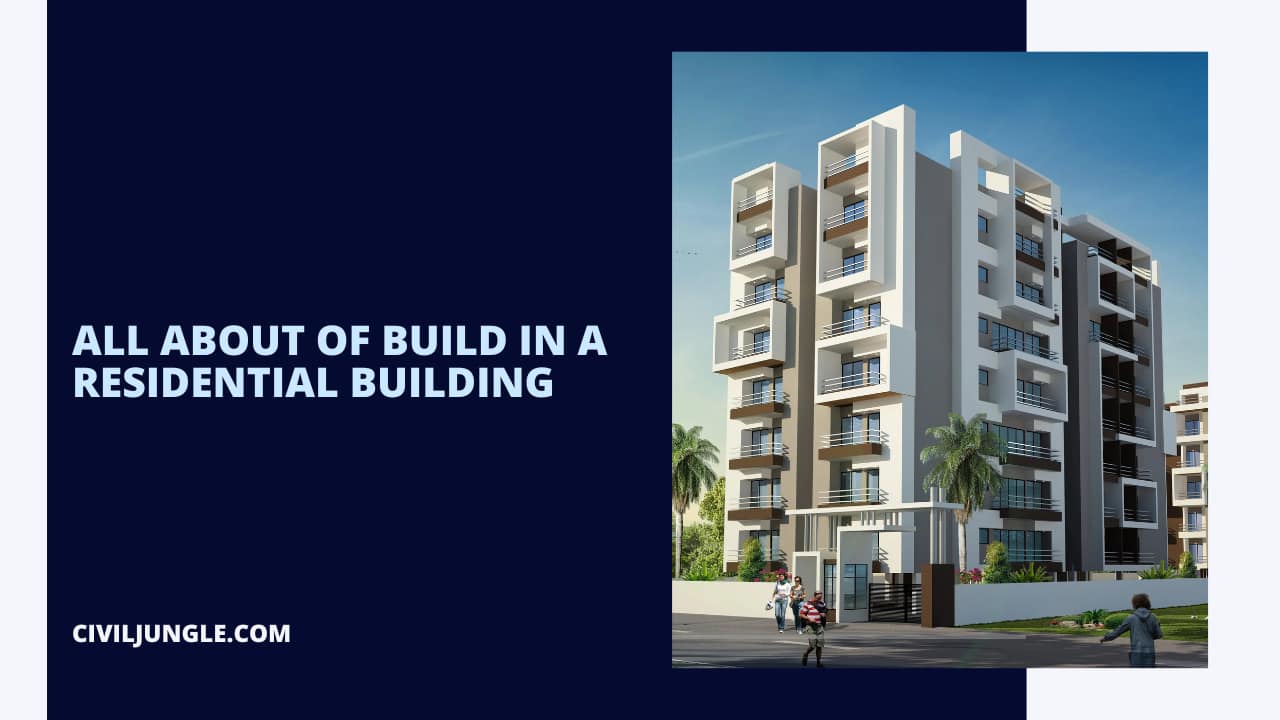

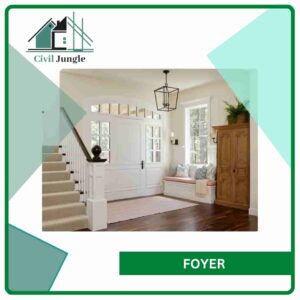
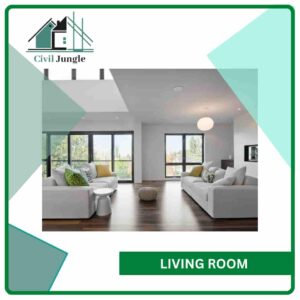
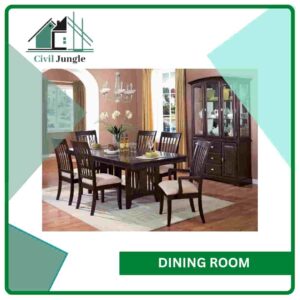
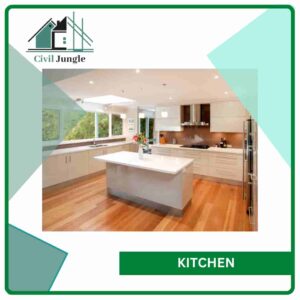
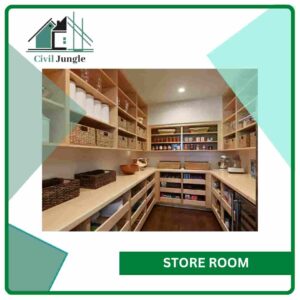

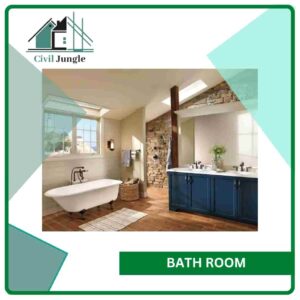

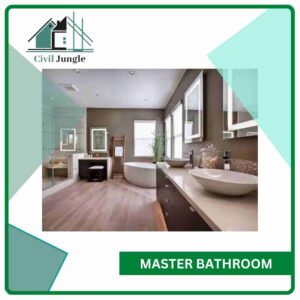
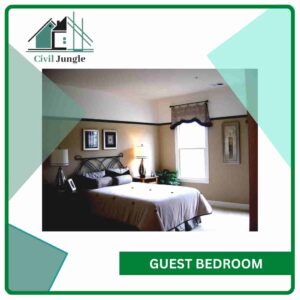

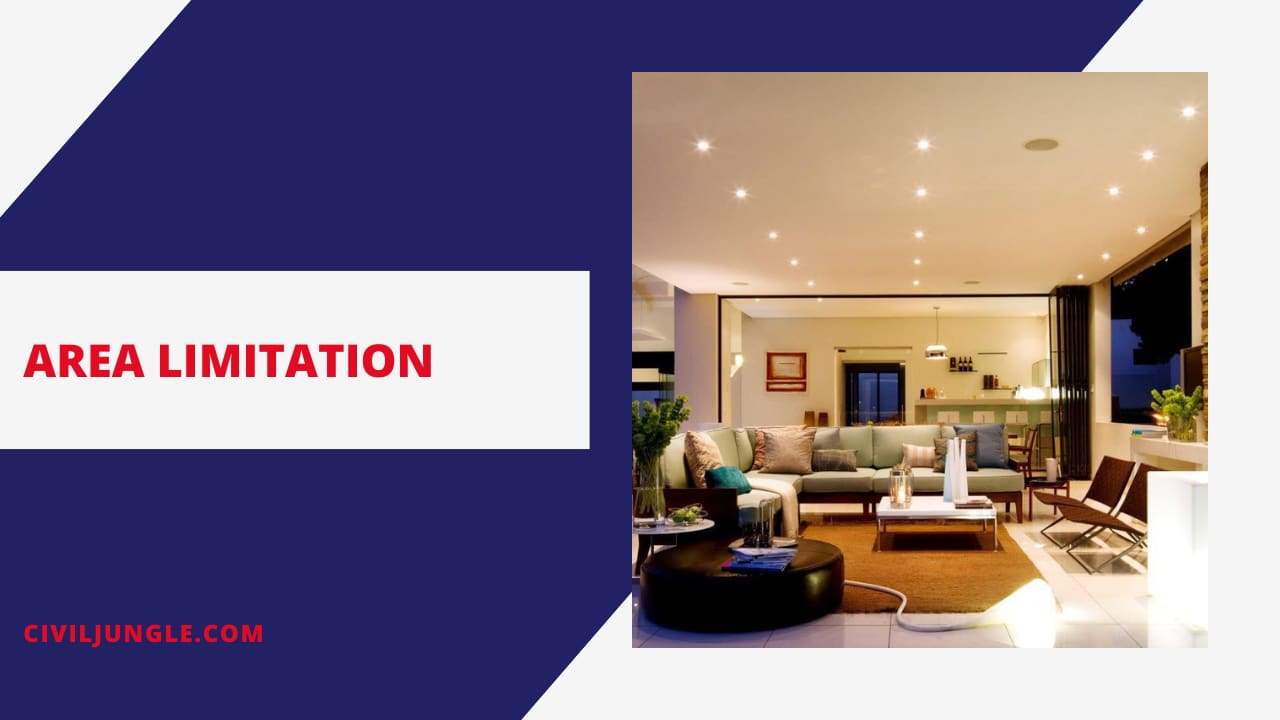
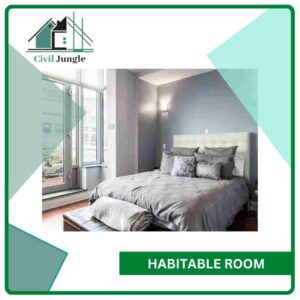
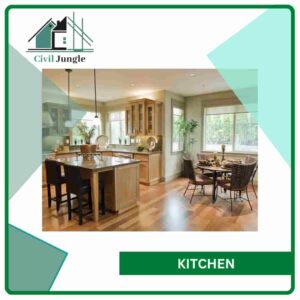
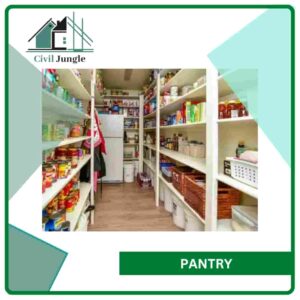
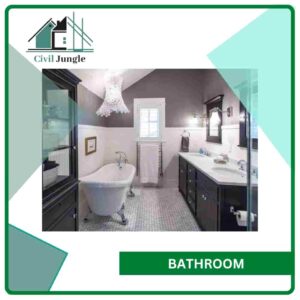
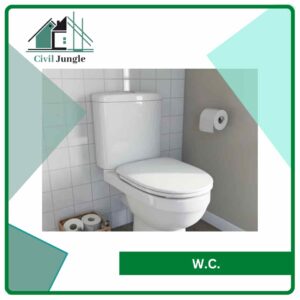
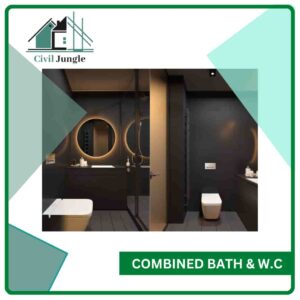
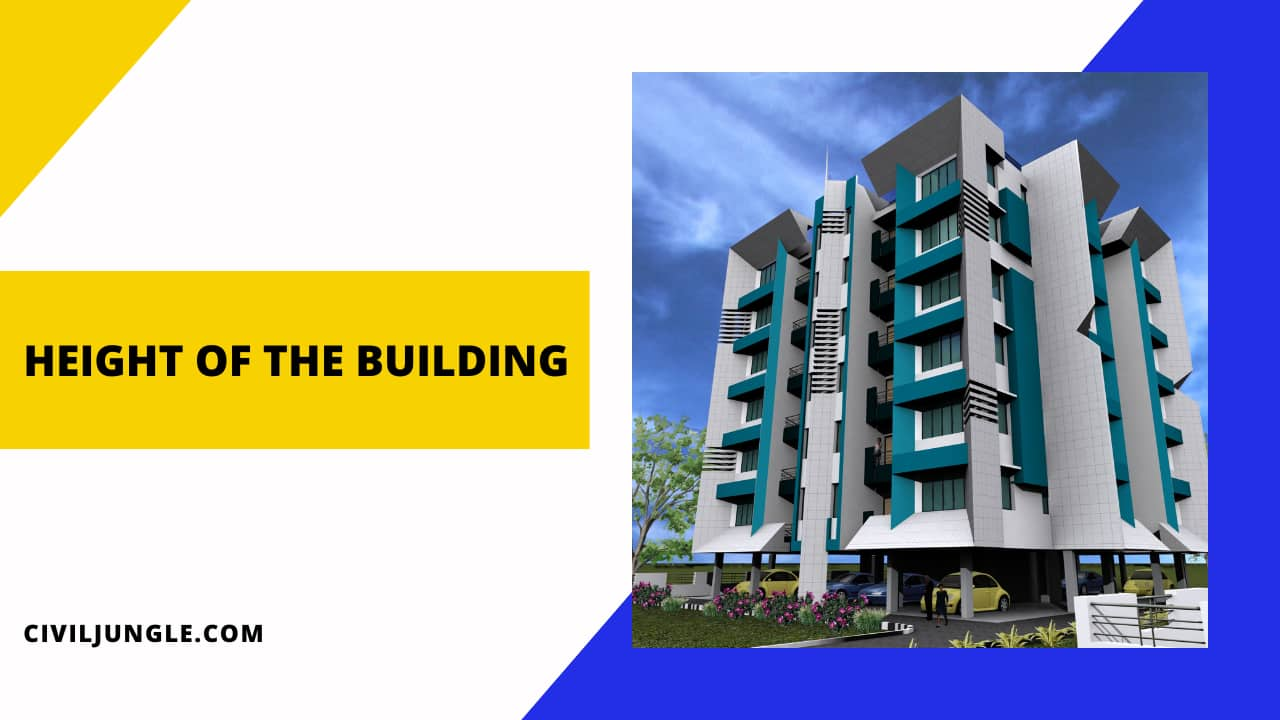

Leave a Reply